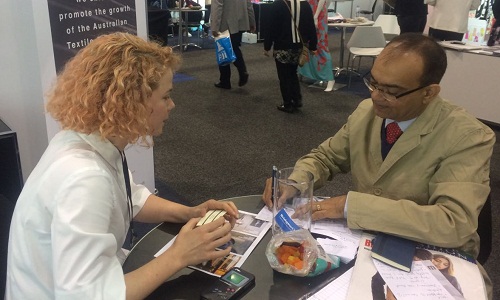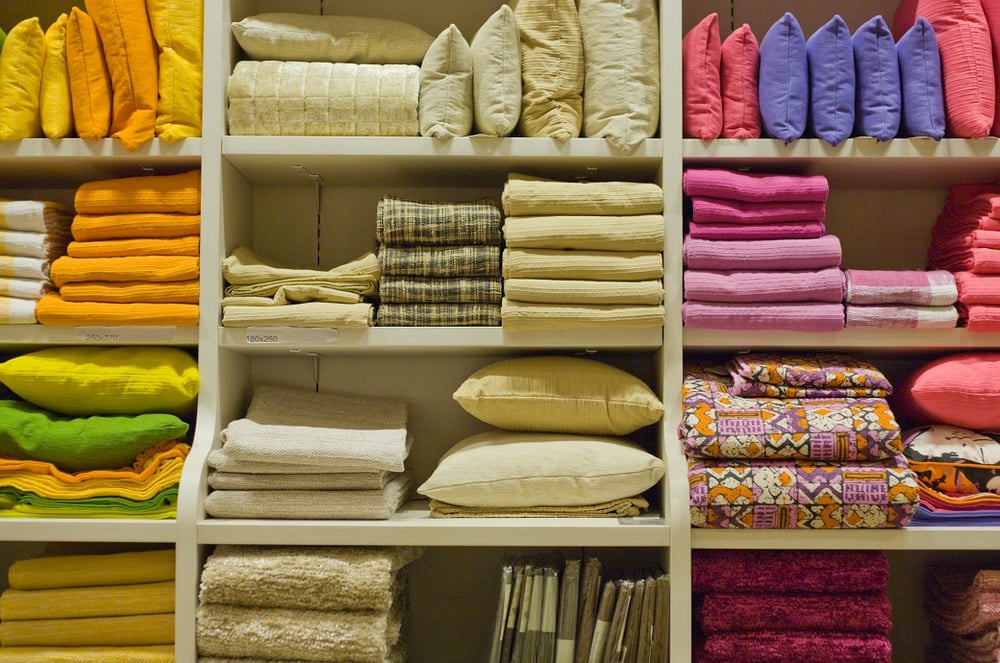FW
World cotton production for 2016-17 is expected to be seven per cent higher than last year. India will remain the world’s largest cotton producer, although its production is forecast to remain unchanged from 2015-16. Output in China is projected to decrease by four per cent while production in the United States is expected to grow by 24 per cent.
World cotton consumption may remain unchanged for 2016-17 despite the widening gap between polyester prices and international cotton prices. Mill use may rise in three of the top ten consuming countries — Bangladesh, Vietnam, and the United States. This will offset losses in China, Turkey and Brazil, where mill use is likely to reduce.
With China paring its cotton stocks, and demand continuing to surge, Indian cotton exporters see an opportunity for the current season. Currently, China is buying its cotton requirements from the US. But since Indian prices are as competitive as other international prices, exports may happen to China once the cash crisis in India subsides.
Stocks in China are expected to decline by 15 per cent by the end of 2016-17. But Indian shipments of cotton to Pakistan have remained muted due to border clashes. Pakistan is one of the major buyers of cotton from India.
Surat’s textile business has been hit by the domnetisation. The city’s power loom sector has already clocked losses amounting to Rs 800 crores. Production in the textile sector has halved. Earlier, there was production of four crore meters of cloth a day. Now production has fallen to two crore meters a day.
Surat is home to 50,000 power loom units, another 40,000 units for value addition and about 400 dyeing units. About 10 lakh workers are employed within the textile sector in Surat. The textile business in Surat has an annual turnover of nearly Rs 350 crores.
Workers are not paid salaries because of the limit on withdrawals. The cash crunch has forced textile and power loom units to shut at least three days in the week and do away with the night shift entirely.
The bulk of the workforce is with dyeing and printing units in textile processing houses, with the power loom sector, and with packaging and unloading in the trading sector. Most of the workers employed in this industry are migrants from Uttar Pradesh, Bihar, Maharashtra, Rajasthan, Orissa and Andhra Pradesh.
Many workers do not show up because they are queuing up at banks or have gone back home with whatever savings they have. So, processing houses are running for only three or four days a week.
"When consumers want to buy a pair of jeans, they are influenced by a broad range of factors - a total of 12. Above all what counts more are appearance and comfort, with fit playing a greater role in the US and Germany. The recent editions of Kingpins Amsterdam and Kingpins New York (October-November 2016), presented some really interesting survey reports by Invista on women’s jeans consumption, expectations and difficulties when purchasing jeans."

When consumers want to buy a pair of jeans, they are influenced by a broad range of factors - a total of 12. Above all what counts more are appearance and comfort, with fit playing a greater role in the US and Germany.
The recent editions of Kingpins Amsterdam and Kingpins New York (October-November 2016), presented some really interesting survey reports by Invista on women’s jeans consumption, expectations and difficulties when purchasing jeans. The study carried among about 2,500 consumers from the main denim markets worldwide – US, China, Germany, Spain and Brazil interviewed 18-49-year-old women who had purchased at least one pair of jeans in the last six months and wear the popular denim at least once a week. The survey was aimed at learning the role of jeans in women’s wardrobes, and how they feel when purchasing them and what they need or miss when buying denim.
The study discovered that women own an average of eight pair of jeans. Despite this, Brazilian consumers own 9.3 pairs each, followed by US and German ones
9.3 pairs each, followed by US and German ones
who own 8.5 pairs each. While counting in which market consumers own more than 10 jeans pairs, once more Brazilians showed how much they love denim as 38 per cent of them (the highest rate among all five markets) owns such quantity of pairs.
Denim for every hour
Majority said they wear jeans when running errands (Germany showed the highest rate with 93 per cent), going out at night (Brazil counted for 84 per cent) or for a dinner (Germany for 84 per cent). When referring to who wear them during working hours, there are different perceptions. For US and Chinese rates are relatively low as they wear them for respectively 51 per cent and 56 per cent, while all other markets register higher levels (German people wear them for 84 per cent). At the opposite level, when asked if they wear them at home, the lowest level was registered in Spain and Brazil (respectively 25 per cent and 31 per cent), while for other markets at over 60 per cent.
As per the survey, the most popular fit for women in Spain, Germany and China is slim fit (29 per cent), while the US prefers skinny and Brazil opts for straight.
Shopping for jeans, a stressful experience
While most say it’s a must have comfortable outfit, shopping for a pair of jeans is equally stressful, the survey shows. “It’s difficult to find jeans that fit well all over,” remark respondents. They hardly can find jeans that fit well around waist, hips, bum and legs. Brazilian women are one of the most frustrated lot among the shoppers from other countries.
It’s almost opposite for China. Even if the average result about how “easy” buying a pair of jeans was 52 per cent, Chinese answers showed to consider it as an easy task for 75 per cent. They are the most enthusiastic about it as they perceive it as a very positive experience – they are far more likely to describe it as enjoyable (48 per cent), exciting (22 per cent), easy (22 per cent) and inspiring (21 per cent).
Selecting close to perfect
When women cannot find what they want, 43 per cent of them simply end up buying the best most similar type of clothing they can find. Reacting in a totally opposite way are 42 per cent of them who prefer not to buy anything – with German consumers most likely to do so (62 per cent) and Chinese ones less likely to do it (21 per cent). The remaining 15 per cent of the sample rather looks for an alternative type of clothing – and most often end up buying a pair of leggings.
Buying jeans by emotion
Purchasing a pair of jeans is strongly tied to emotional aspects as women often consider a pair of jeans that fit them well as a very important ally. For instance, 72 per cent of the interviewed people think: “I have my favorite pair of jeans and I will be devastated when they become unwearable”. Another 58 per cent retains that when finding the right pair, they will have to pay a bit more, while others believe that good fitting jeans are really expensive (62 per cent).
Denim survey: Buying factors
Invista also asked consumers who wore jeans made with Lycra Beauty fabrics with the following result: “They are the first pair of jeans I’ve worn till the end of the day without the knees losing their shape” and others said: “These jeans are flattering and fit in all the right places.” Wearing jeans that don’t lose their shape and make who’s wearing them at ease and beautiful are key factors brands and companies have to take in consideration more for the future.
Chinese imports of cotton yarn in November may increase slightly compared with October. Supply is not expected to be tight, and price is likely to be weak. Price of Indian carded 32S for airjet may rebound.
Cotton yarn imports in January to September 2016 were down 20.5 per cent on the year. Vietnam, Pakistan and India remained the major cotton yarn suppliers for China in September, totally sharing around 71.5 per cent.
Vietnam ranked first with price and tariff advantage, and Pakistan was in the second position with stable demand for low-count carded cotton yarn and siro-spun cotton yarn from Chinese buyers. India declined to the third position in September amid slanting high price.
India was the largest import origin for combed 30-47S/1 in January to September 2016, sharing around 50.2 per cent, as the price of Indian combed 30-47S/1 enjoyed an absolute advantage. Vietnam was the biggest supplier in August 2016.
Import unit price of cotton yarn increased in September. The price rise of combed cotton yarn was steeper than the price rise of carded ones in September. Month-on-month increment of combed 8-25S multiple plied yarn was the biggest in September, staying at around 8.7 per cent, and increment of combed 25-30S multiple plied yarn was the smallest, staying at around 1.8 per cent.
VF Corporation has reduced its global carbon emissions by 12 per cent from 2011 to 2015. VF is an international apparel and footwear company. It owns the brands Timberland and The North Face. VF achieved these reductions while seeing vast expansions to its business, adding more than 500 sites to its global operations within the five-year period – a 40 per cent increase driven mainly by retail store expansion.
The reduction efforts focused on four areas of operation--manufacturing, distribution, retail, offices and facilities. VF achieved half of this 12 per cent reduction from increasing its use of clean energy, renewable energy credits and carbon offsets. The other six per cent came from smaller initiatives such as employee behavior change programs and various energy efficiency measures such as installing LED lighting in retail stores, technology upgrades in distribution centers and the construction of energy efficient facilities.
VF is also working toward its 100 per cent renewable energy goal across all owned and operated facilities globally by 2025. It has taken steps to be an industry leader in sustainability with its global carbon reduction efforts.
Timberland is ramping up its circular economy efforts. Outdoor apparel giant The North Face has been committed to a chemistry program which aims to create significant environmental savings that go beyond compliance, to identify environmentally preferable chemicals and to reduce overall chemical use in its supply chain.
Over five lakh workers employed in readymade garment units in and around Tirupur have not been paid wages, following the demonetisation initiative. Another two lakh workers employed in small and medium spinning and weaving mills have also got impacted due to the cash crunch.
Most of these workers do not have a savings bank account and 70 per cent are migrant workers from the North and Northeastern India. There are over 5,00,000 workers employed in more than 1,200 knitwear or garment units in and around Tirupur and they get paid an average weekly wage of around Rs 3000.
Not only workers, owners too have suffered. While could not pay weekly wages to workers on time, they themselves could not mop up the necessary funds from their buyers who too were hit hard by the decision.
There was a 15 to 20 per cent decline in the offtake of yarn from spinning mills in the last few days due to the cash crunch. Most of the buyers pay cash to get their stocks delivered. The move has impacted the mills in a number of ways, including payment of logistics costs, workers’ wages, cotton purchase and other daily cash-based activities.
The currency crisis threatens to have serious effects on the economy. Due to the cash crunch, it has become difficult for garment units in Ludhiana to buy raw material, pay bills and make payments to laborers. The major problem is shortage of labor. Workers have stopped coming to factories because they haven’t been paid. Or they are lining up outside banks to get their notes exchanged. Either way production has been hit. Employers themselves have not been able to withdraw adequate cash for managing factory expenditures.
Garment exporters are facing canceled orders due to delays in production and drop in orders from local or multinational brands. Leading brands have cut down their orders. It is feared that exports of garments from Ludhiana’s micro, small and medium enterprises can drop by 30 to 40 per cent.
Apart from the labor crisis, the supply of raw material from vendors has been hit due to the cash problem. Manufacturers fear this disastrous situation is going to hurt their businesses badly and that they have to suffer heavy losses.
Ludhiana is a leading producer of woolen and acrylic knitwear although it also uses extensively cotton and other blended fibers to produce a wide range of fabrics, hosiery, knitwear and readymade garments.
Gap is falling into irrelevance. And to think the clothing store opened in the US in the ’60s with reference to the rift between young idealistic children and their conservative suit-and-long-skirt wearing parents. At the time Gap provided young hippies with all their indigo denim needs.
Now Gap’s three-tier brand model — Old Navy for the budget buyer, Banana Republic for the upscale shopper and Gap stores for everyone else — isn’t working as well as it used to. Over the past year there has been a three per cent decline for Old Navy, a four per cent drop for Gap and an 11 per cent plunge for Banana Republic.
Same-store sales have fallen specifically at Gap stores for ten consecutive months. Banana Republic has fared worse with 20 consecutive months of declining sales as it struggles to figure out what women in particular want in high-end workplace attire.
Gap’s total sales for the three months ended October 31 were flat compared with the same period last year. The retailer plans to close 140 of its 675 North American stores and shed 250 corporate jobs by the end of January. Gap has been overtaken by fast fashion retailers like H&M, Zara and Forever 21 that have lured younger shoppers.
Denim Première Vision Paris took place on November 2nd and 3rd, 2016. The show was deemed a success by most mills, brands and designers. It offered the latest fabrics and sustainability initiatives designed to make denim stand out. Denim connoisseurs were given the opportunity to browse and buy a selection of the finest vintage garments.
Emerging trends and future challenges affecting the growing and increasingly complex industry were discussed. It was argued that price focus was causing a stasis in trends and development. For instance stretch has been the main look for more than a decade. It was suggested that authentic, rigid denim fabrics could offer more potential for creativity and newness.
The price-quality ratio was underlined, particularly for premium denim brands competing against fast fashion rivals. If something was being retailed at a high price, it needs to look as if it costs that much, not like something that can be picked up at a fast fashion retailer for a third of the price.
Sustainability and limiting environmental impact was a big part of many exhibitors’ presentations. So there were firms showcasing yarn made with recycled fibers or denim made using 100 per cent Better Cotton Initiative cotton. Prosperity Textile has become the first Chinese denim mill to join the Bluesign environmental system.
"One of the features of this edition of ISEA has been the support of the Council of Textile & Fashion. This is an industry body which exists to promote the growth of the industry in Australia. It helps members strengthen their local and off-shore supply chains."

One of the features of this edition of ISEA has been the support of the Council of Textile & Fashion. This is an industry body which exists to promote the growth of the industry in Australia. It helps members strengthen their local and off-shore supply chains.
It's a not for profit organisation with 65 years of service to the industry, and members are drawn from across the fashion and textile industry.

Its focus areas are growing exports, navigating start ups, harnessing innovation, helping supply chains get globalised in order to optimize and supporting ethical practices. It supports and guides local industry to help grow their business.
Key supporting activities are training networks, organizing workshops and seminars, tailored and accredited training.
Among its other initiatives are setting industry policy and showcasing emerging designers. It gives an immense opportunity to young budding designers to showcase in this very progressive nternational show.
It connects with international industry and potential collaborators and adds a lot of academic value to the event. The council conducted three academic sessions in the seminar section in the following order. One was conducted on the first day of the show and the remaining two were lined up for the last day.












